
Are Anyone’s Amazon Sales Down?


Table of Contents
The title of this blog is a phrase that I think I see in Facebook groups 89 times a day.
Amazon sellers experience slow sales for a day, weekend, or even longer period of time, and (understandably) get worried that this might be only happening to them, so they reach out to see if anyone else is experiencing this phenomenon.



In this article, we will go over some ways for you to have access to metrics that will make it so that you NEVER have to ask this question again!
Stay Focused
First off, it’s important to know that regardless of if you know how to tell how the market is doing, it’s pointless to ask the question in Facebook groups if people’s sales are down.
As you know, 99% of Amazon sellers like to keep their products secret. Let’s say you are selling beach balls. You ask “is anyone else’s sales down?” What if someone who replies “Yes!” is someone who sells cell phone cases?
Of what value is it to you knowing that person’s sales are down as well? It shouldn’t make you feel any better or worse if some unknown product’s sales are down or up.
What truly matters is how your sales are doing in relation to your market, or niche.
With that in mind, let’s examine some strategies on how you can know if your sales peaks and valleys are isolated to you or something that your competitors are also seeing.
Strategy 1: Looking at the BSR
The easiest way to know if your sales are up or down in comparison to your direct competitors is by looking at the BSR, or Best Seller Rank of your products.
BSR changes throughout the day and is based on the sales velocity of a product compared to other products in the category and sub-category.
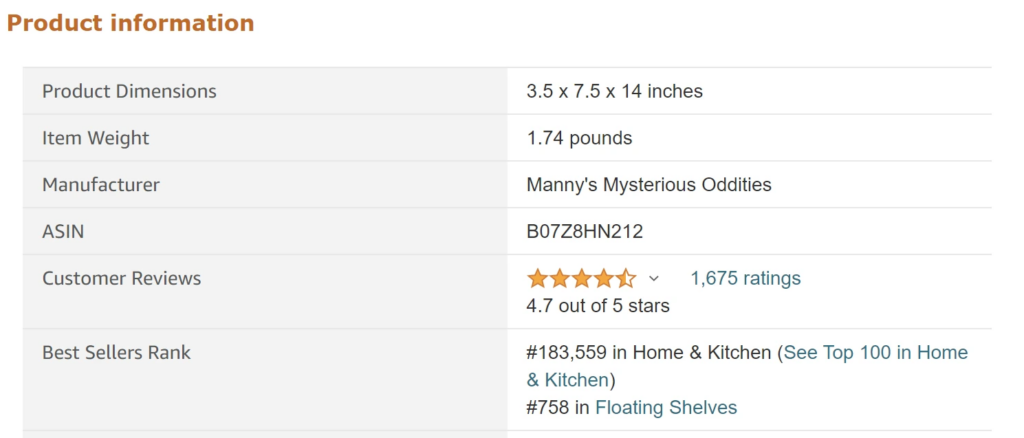
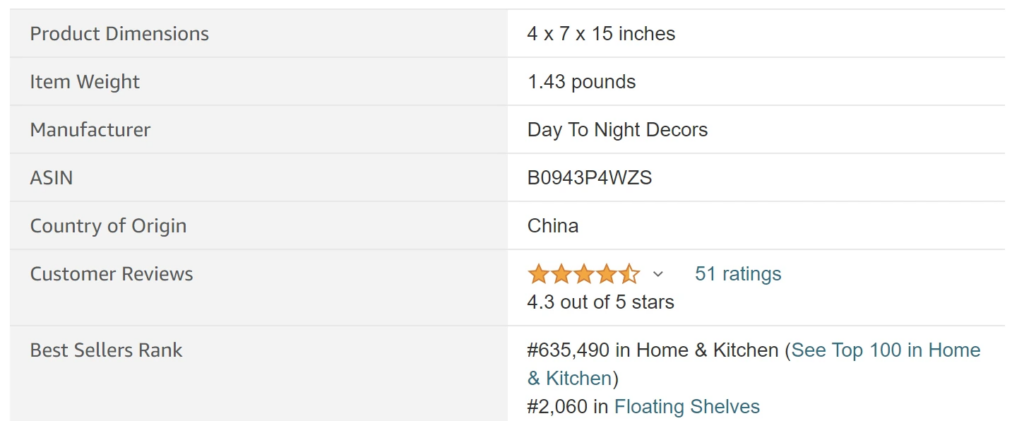
Above, you can see, directly from the product pages, the BSR of our Project X Coffin shelf, and that of another coffin shelf. There is no doubt that we are crushing them in sales as of now due to our BSRs being much lower than theirs.
Why is this true? If my product gets sales at a rate faster than the competitors, my BSR number will go down. What I can do is start to monitor my BSR on the page and my competitors. If I am still making sales, but my BSR remains relatively constant, all that means is that most of my category is also maintaining relatively consistent sales.
If my BSR continues to go down, it means my sales are faster than those around me. When my BSR goes up, that’s when I know that some in my category are selling more than me. However, what really matters is what your BSR is compared to the BSR of your direct competitors. You are not competing with all 1,000,000 listings in the Home and Kitchen category.
Having someone refresh BSR for yourself and your competitors each day might be a little tedious, so here is another way to be able to monitor this.
Strategy 2: Look at the BSR history charts with the Helium 10 Chrome Extension
Even if you have the free version of the Helium 10 Chrome Extension, you have access to historical BSR charts.
Let’s say you are looking at your sales for the coffin shelf for the last 7 days.
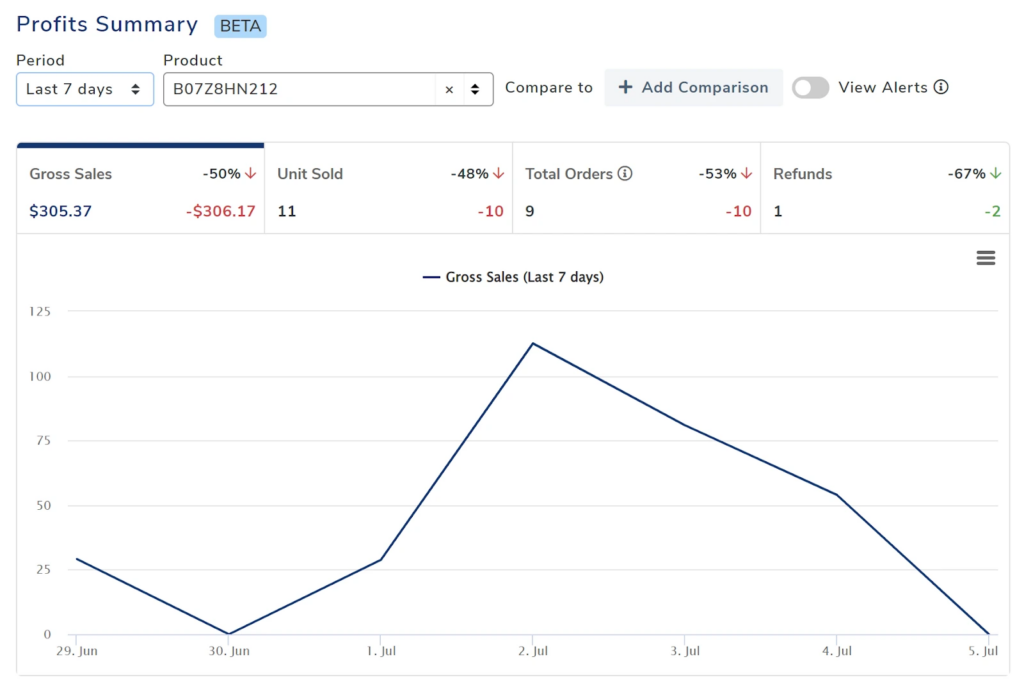
From this chart, you see a decline for the last 3 days. This might be when you get worried that something has happened to your listing which is killing your sales. You might be wondering if it’s just a slowdown in sales overall. BUT WAIT! Before you go posting another “Amazon Sales Down?” Facebook post, let’s take a look at the BSR charts of our product.
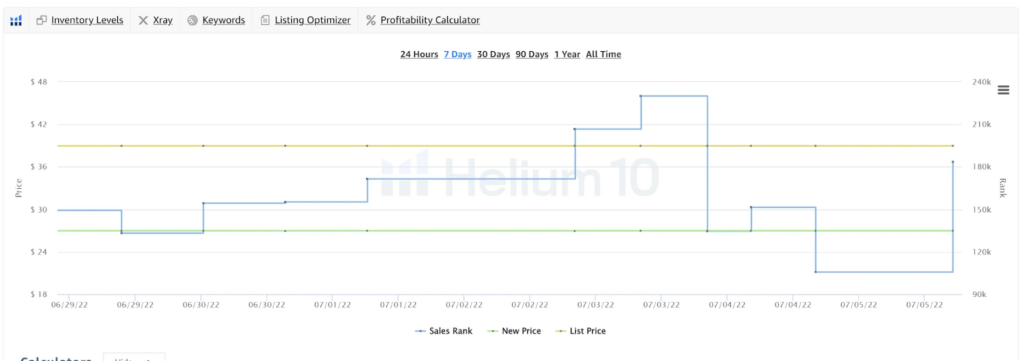
Not only did my BSR not go up, it actually went DOWN, meaning that my performance on average over those “slow” sales days was better than that of other products around me in the Home and Kitchen category!
That other coffin shelf alluded to earlier had a BSR that has not been below 300,000 during the same time frame. There is no doubt that our coffin shelf is doing better this week than that one.

This method of looking at historical BSR charts is of course much better than trying to manually track BSR for a bunch of products throughout the day.
However, there is an even better way.
Strategy 3: Use Helium 10 Market Tracker
No matter what Helium 10 subscription you have, sellers are able to create markets in the Helium 10 Amazon Market Tracker. Set this up by adding your top 5 most relevant keywords to your niche, along with any DIRECT competitors of your product.
For example, for my coffin shelf, I have added ONLY other coffin shelves with similar form and function. I did not add coffin mirrors, coffin makeup holders, and things like that. I really wanted my “market” to be a good reflection of the customer behavior who is looking for a product just like mine.
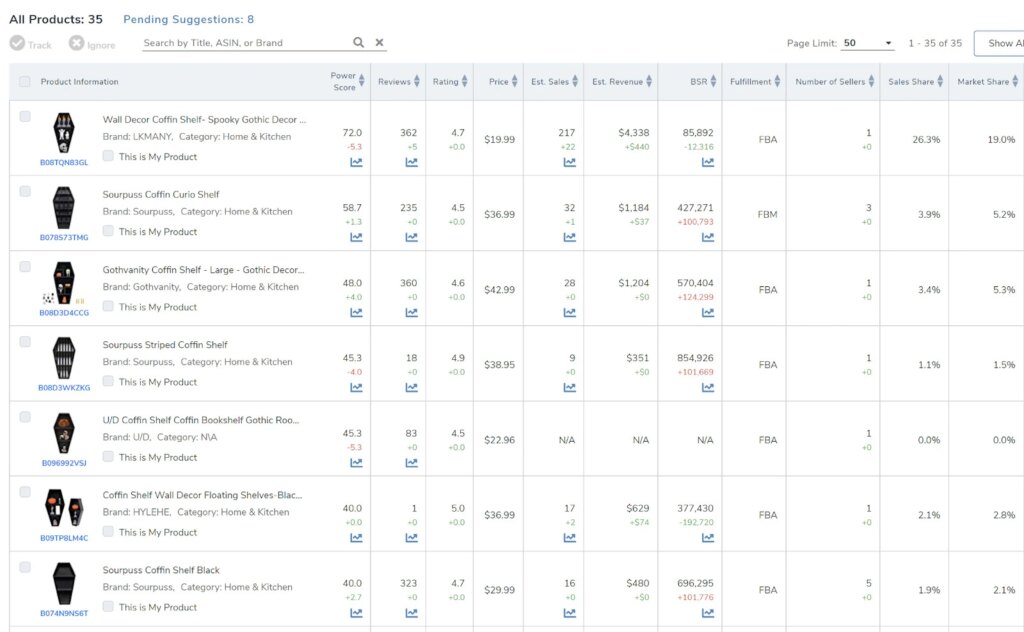
Now, in the context of knowing if your Amazon sales are down compared to competitors, this is where the value lies in Market Tracker. First, you are able to track the market size, as a whole, over time. Think of it as the “size of the pie.”
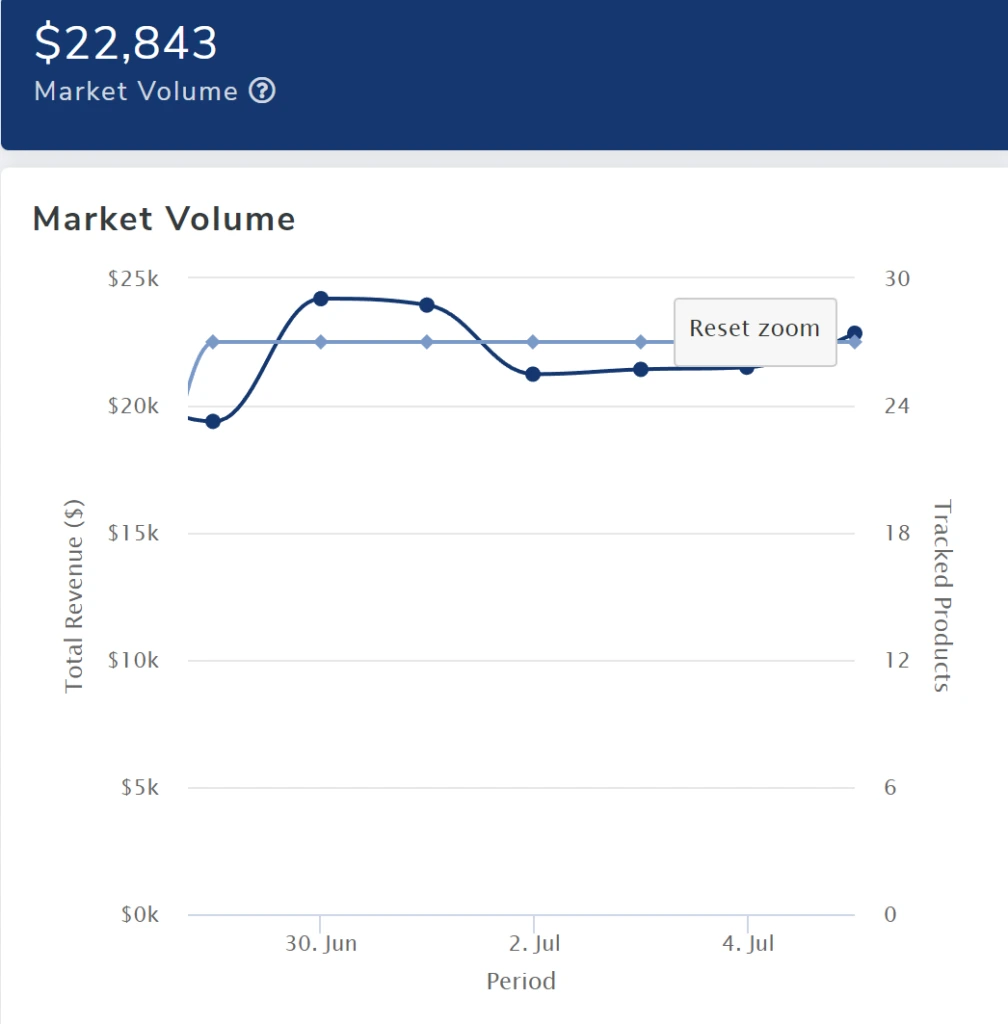
Now things start to make sense. Maybe you were wondering how in the world our coffin shelf sales were down, when our BSR actually got better? Well, here you can see how the market as a whole started doing less estimated sales at the beginning of the month. The “size of the pie” got smaller.
Just like with BSR, you want to see something that tells you your current “slice of the pie.” That’s where the second Market Tracker main chart comes in.
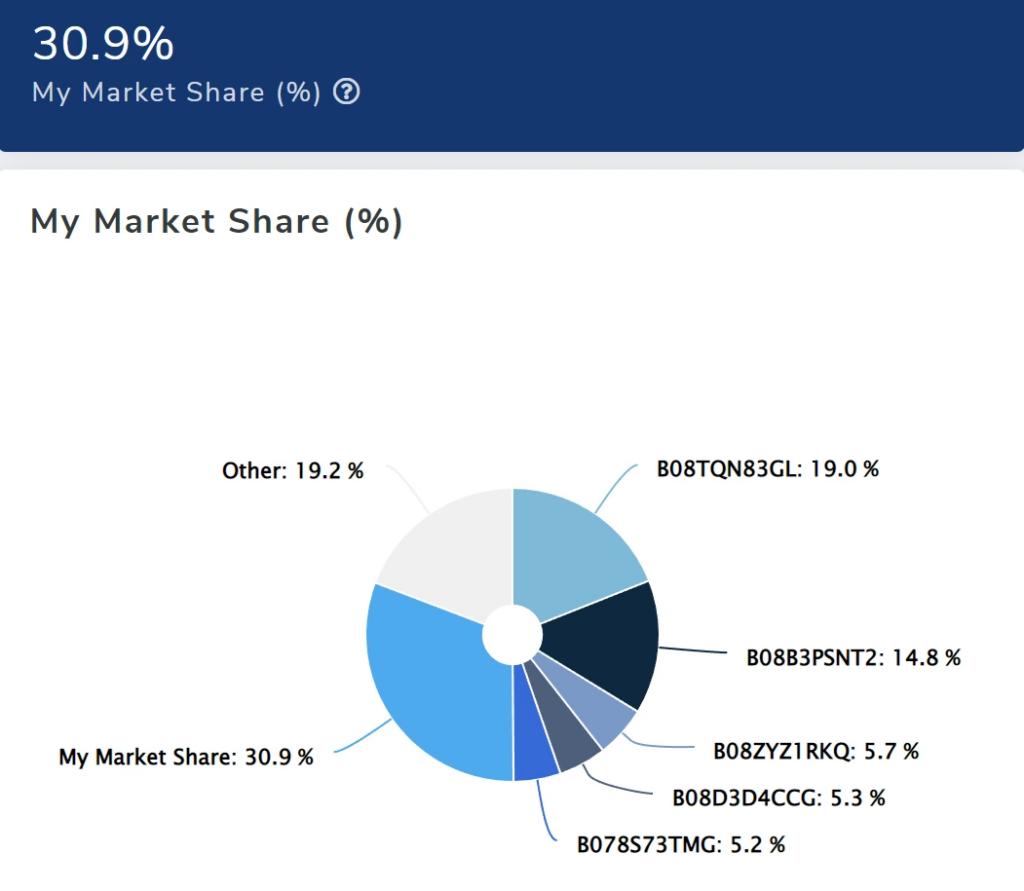
From here, I can see I have nothing to worry about, as our coffin shelf is number one in the market for revenue generated. We have the biggest slice of that sales pie. But this is just the number for today. As always, what’s important is how this number changes over time, and for that, we have the last Market Tracker chart.
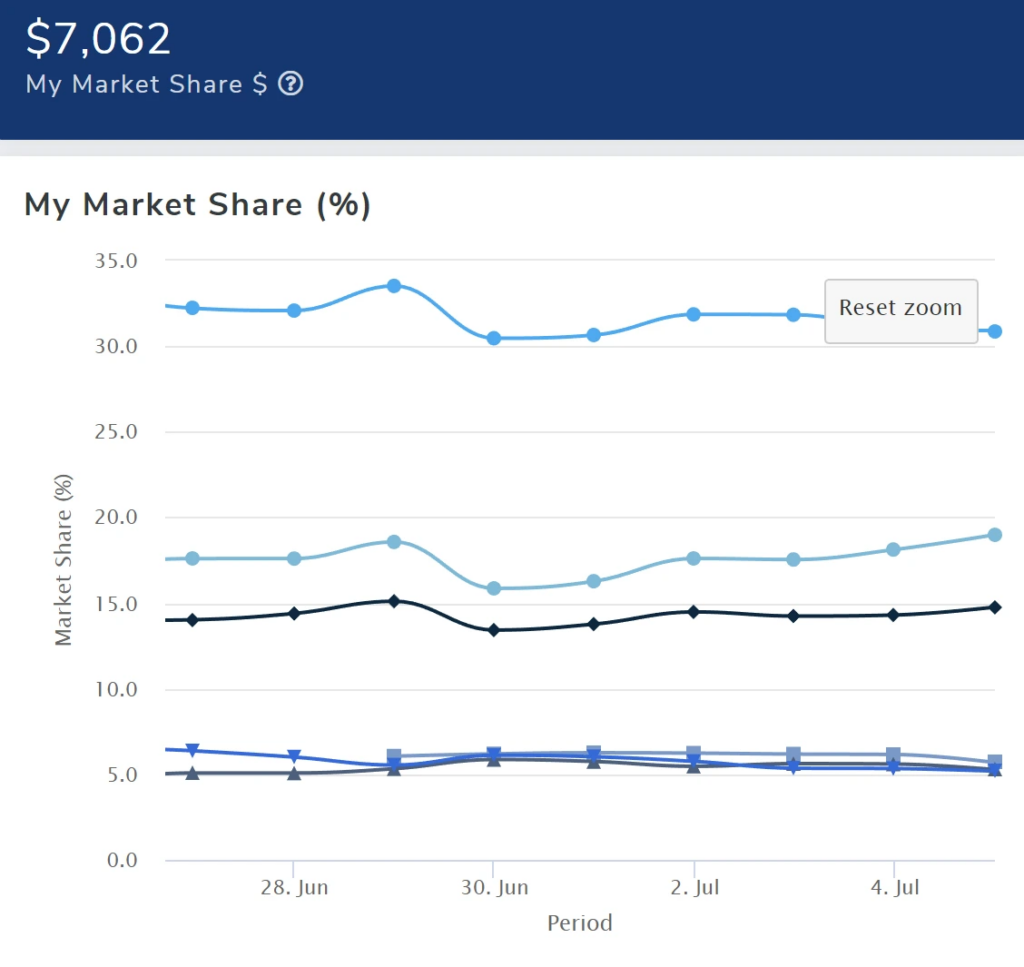
Here, you can see how our piece of the pie actually went up, even though the market went down, and that ties in exactly with what we saw in the BSR history.
If I was just looking at our sales for the coffin shelf the last few days, I might have had the impression that things were not going well, and might have made one of those “Amazon sales down?” posts on Facebook.
But by using any of these strategies, I can clearly see things are fine. This is not going to always be the case. You might look at Market Tracker and see that your slice of the pie is getting smaller.
In real life, I need my slices of pie to be smaller so I can lose some weight, however on Amazon that’s obviously not what you want. This is when you can start taking action.
- Check your keyword ranks in Keyword Tracker to see if you have lost any organic rankings on your main keywords. If so, go to step 2.
- Check your PPC ranks in Keyword Tracker, and if those are also not at the top of the page, you might want to increase your bids on those keywords in Adtomic or Seller Central.
- Run our Amazon keyword research tool, Cerebro, for your product vs. your top 5-10 competitors and see if one of them is ranked in the top 10 for a keyword that you are not.
- If you are not ranked at all for one of those keywords, run them through Index Checker to make sure you are even searchable for them.
- Run Listing Analyzer for your top competitors including yours and check how your listing stacks up to them. Then run the new Media Comparison function to check their image strategy.
Remember, Things Aren’t Always As They Seem!
Every product on Amazon has peaks and valleys in sales. Sometimes it might be cause for alarm, other times, it’s just par for the course. Instead of just looking at your raw sales numbers, use the strategies above so that you never again have to do one of those “Amazon Sales Down?” posts in a Facebook Group!
Achieve More Results in Less Time
Accelerate the Growth of Your Business, Brand or Agency
Maximize your results and drive success faster with Helium 10’s full suite of Amazon and Walmart solutions.

